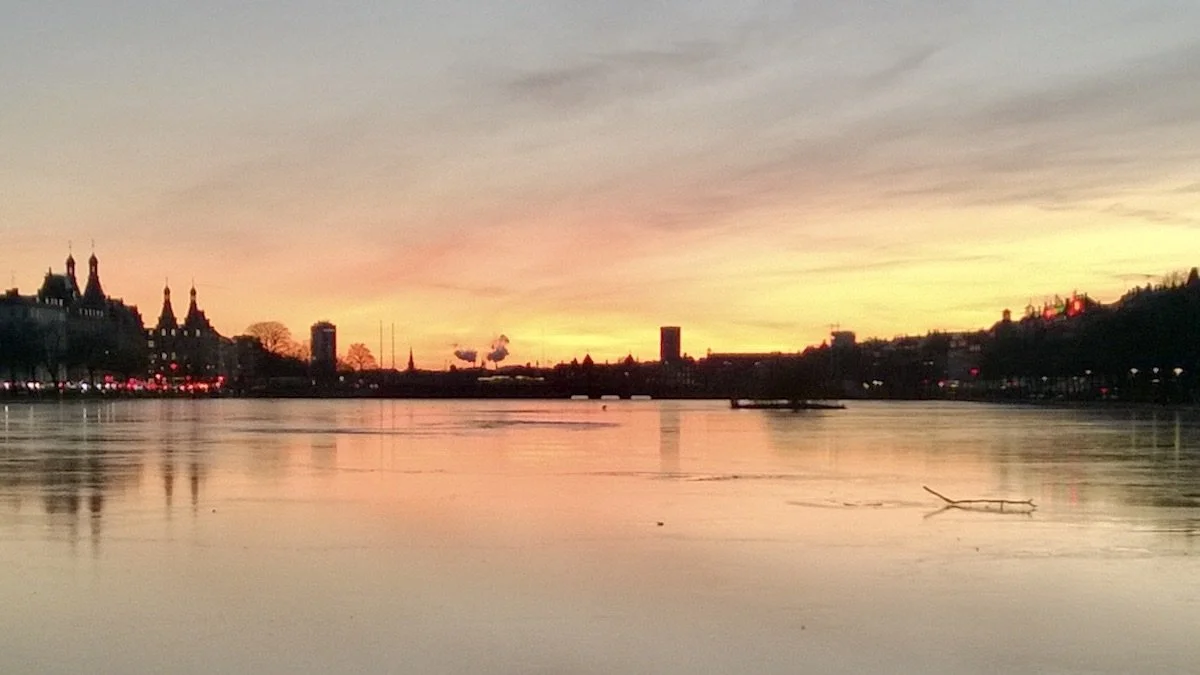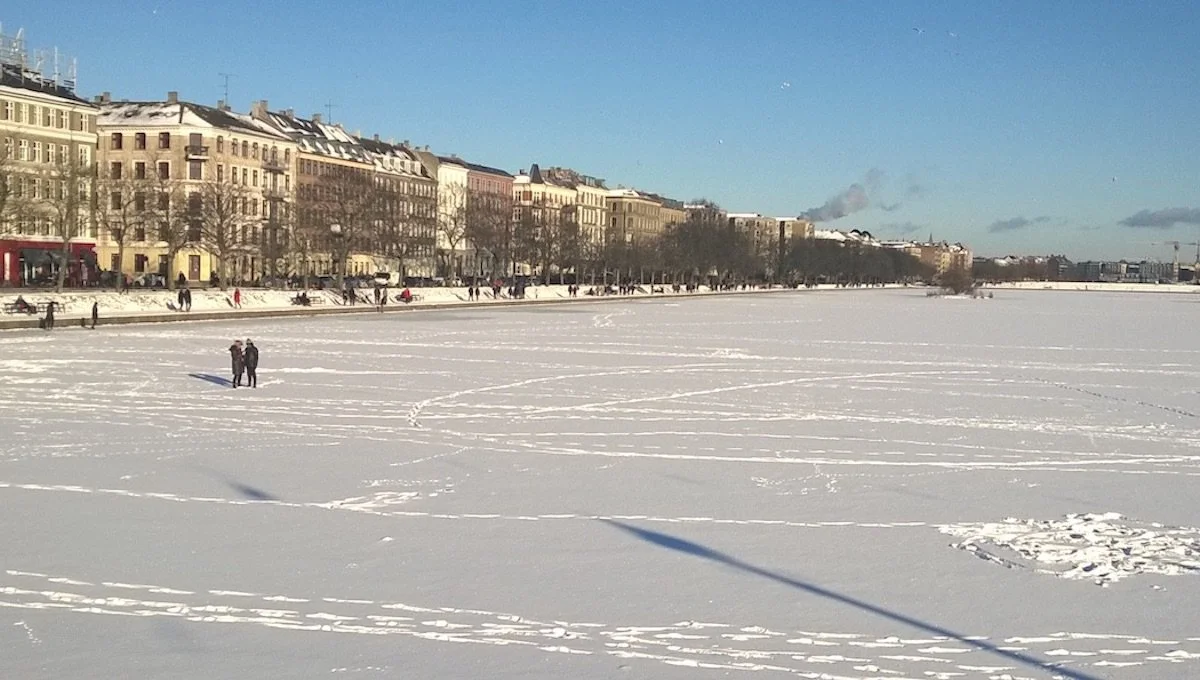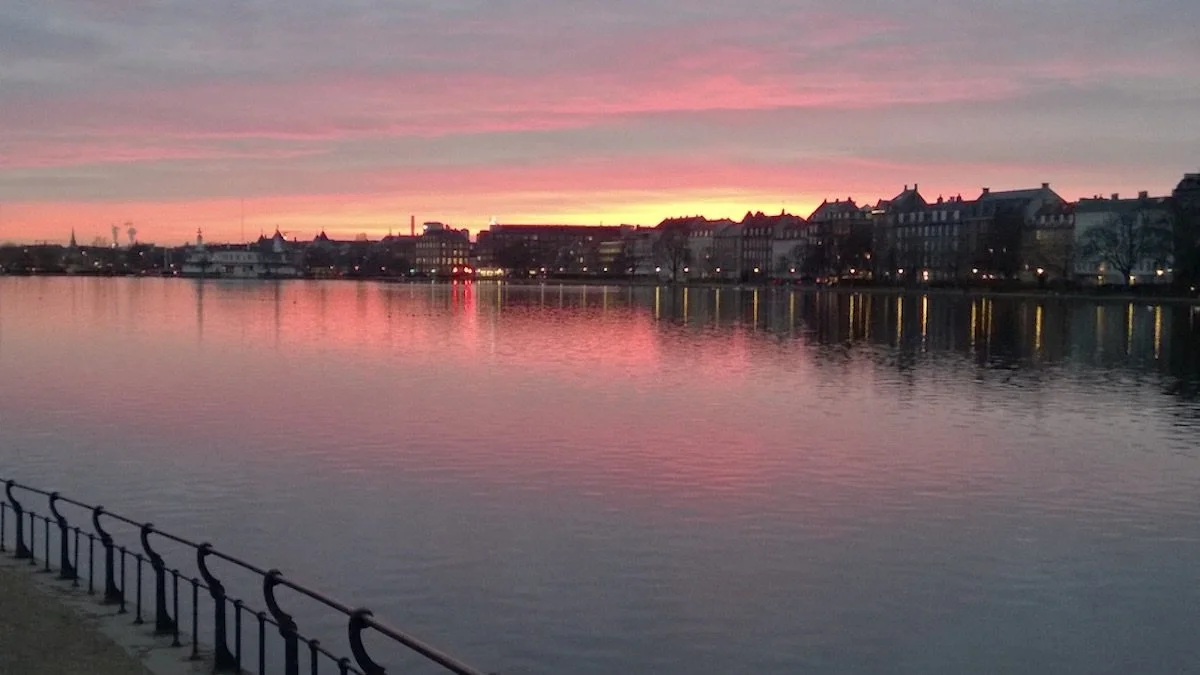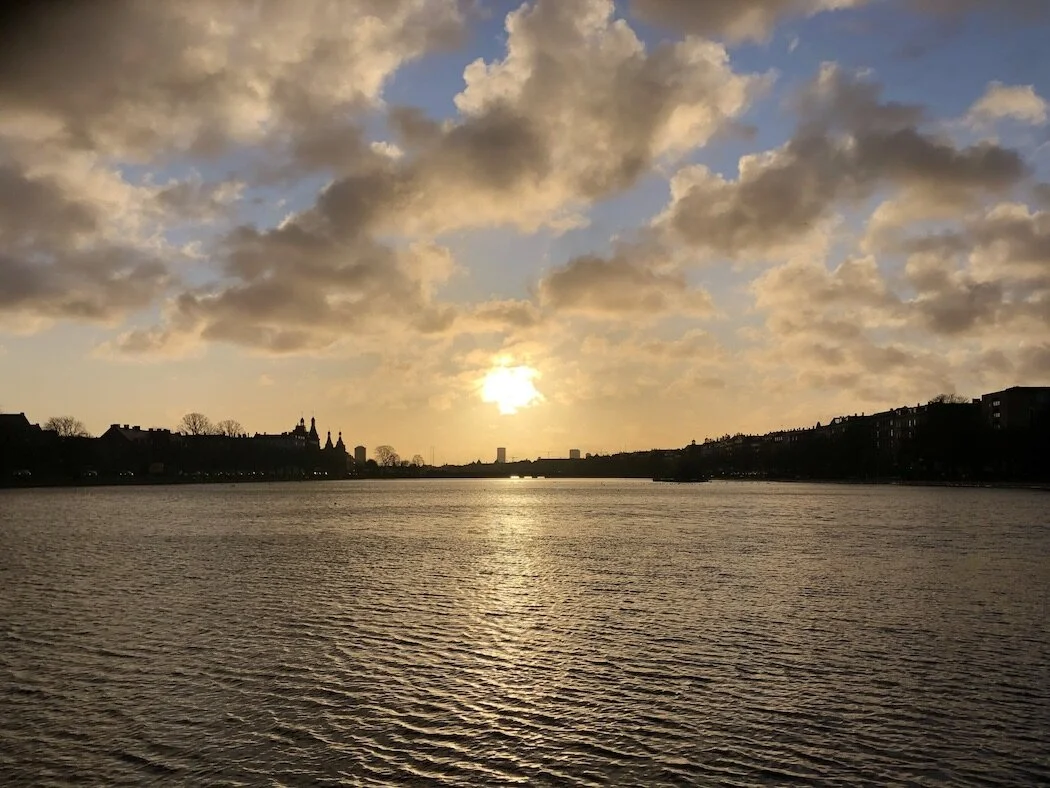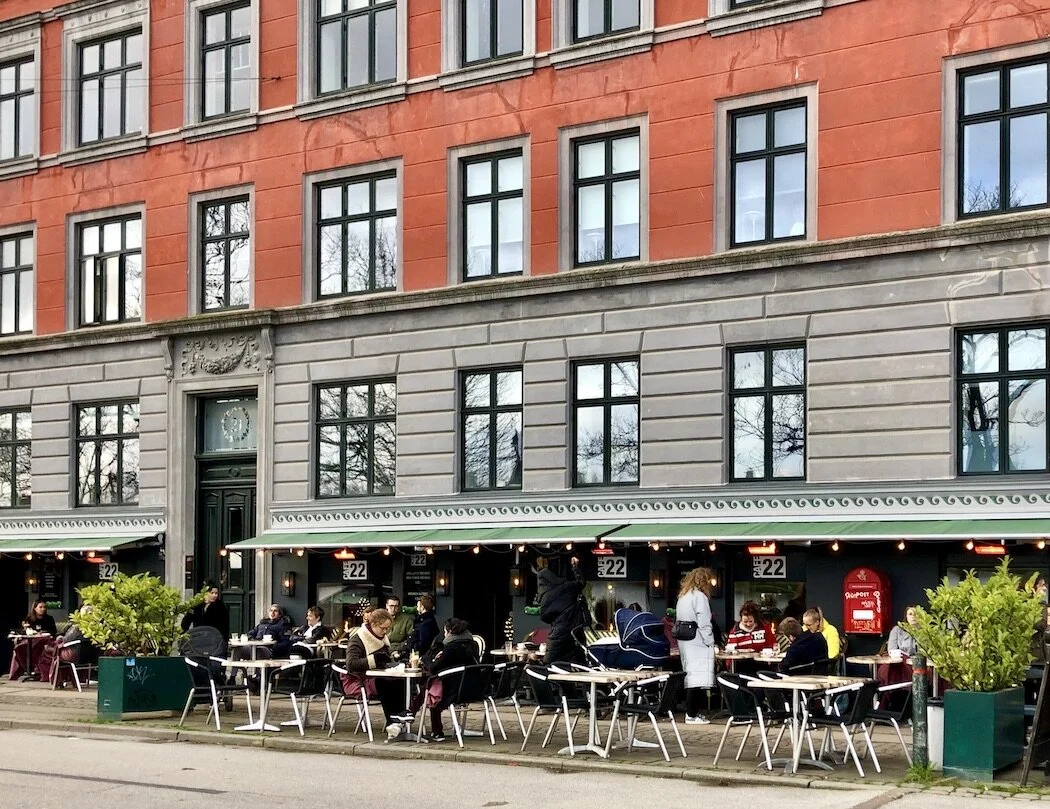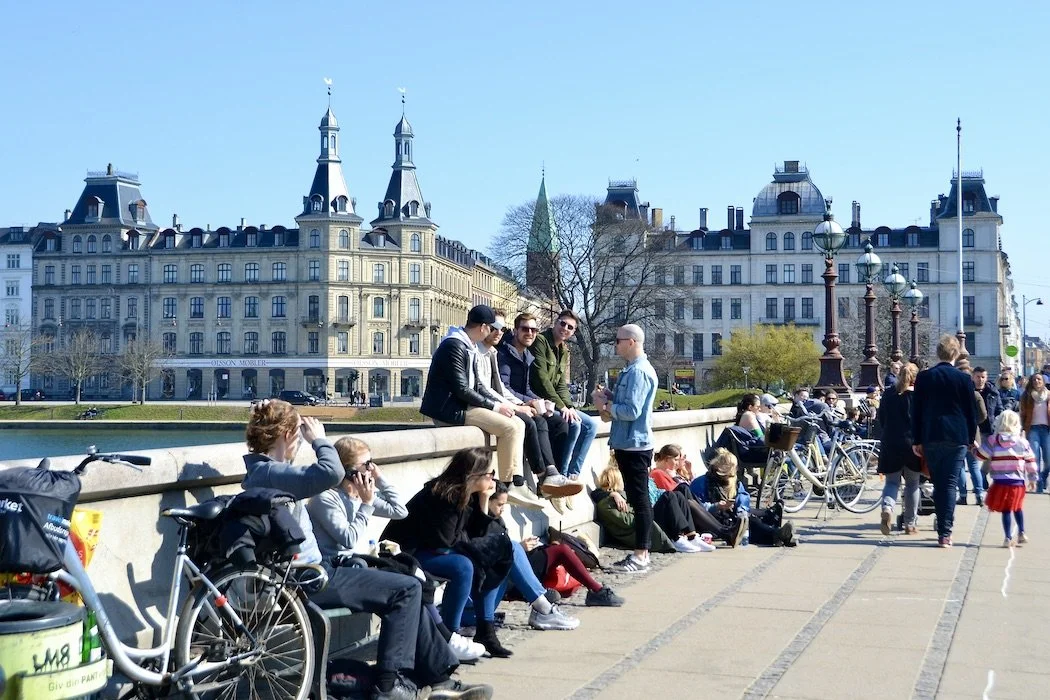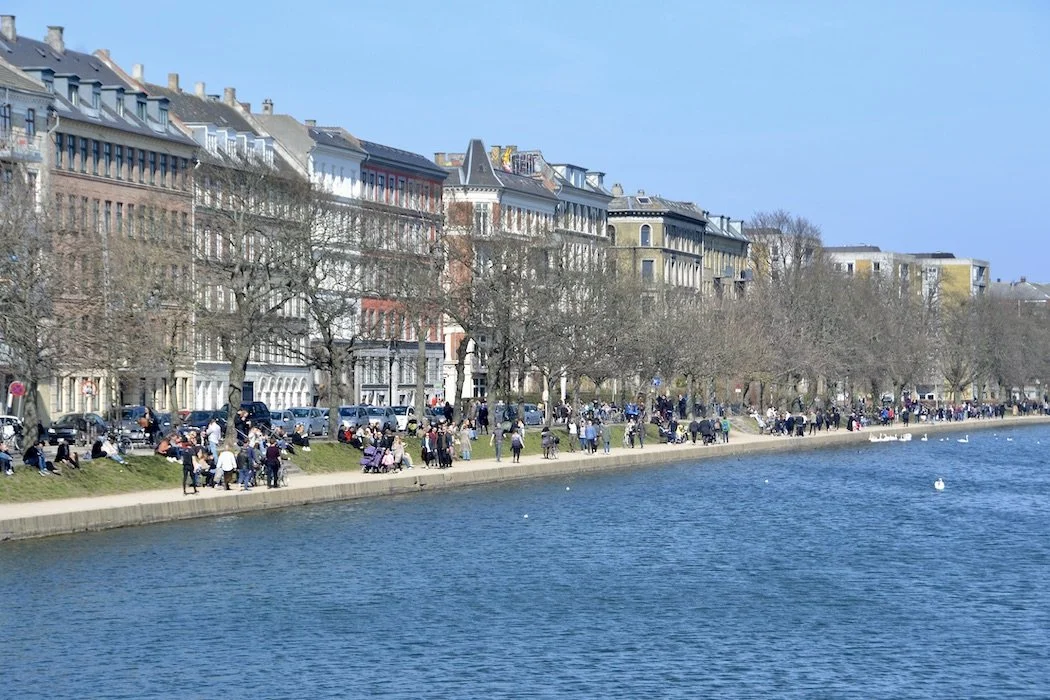Winter around the Copenhagen Lakes
Winter view over a Copenhagen Lake
“No winter lasts forever; no spring skips its turn.” — Hal Borland
The Copenhagen Lakes, just called “the lakes” by locals, are a series of three rectangular bodies of water that form a gently curving arch around the inner city. They provide a beautiful breathing space for Copenhageners, who make extensive use of the area for all sorts of recreation. From above, they look like 5 lakes, though they are connected under the dams and bridges. Most travelers never experience these gems, especially those who have only a day or two to visit Copenhagen’s main attractions before or after a cruise. A 6.3 km (3.9 miles) stroll, run, or leisurely bike ride around the perimeter paths is all it takes to become hooked.
The area was originally a narrow semicircular valley with a long stream running through it. Just outside of the city’s ancient earthwork fortifications, farm animals grazed on the adjoining meadows. In the early Middle Ages, the need for a watercourse large enough to drive a windmill led to the damming of the small river, which created the Peblinge Lake. After the city was besieged in 1523, the dam was raised and another one was built to create a new lake, the Sortedam Lake, which added another layer of impenetrability to the city’s defenses. In the early 1600s, Saint Jørgen’s Lake resulted from yet further damming of a few more small streams so the area could be flooded when necessary to defend the capital from invasion from the west.
In former times, the frozen lakes were used in winter for skating, bandy, and even car rallies. The lakes don’t always freeze enough in winter nowadays for skating, walking, or biking (Yes, that definitely happens!) the length or width of a lake. Winter can still surprise some years, usually in January, and freeze the lakes enough to turn them into a winter wonderland. Then, the city allows supervised skating, and creative types come out to build imaginative sculptures if it has happened to snow on the ice. When the sun shines on winter days especially if it’s also on a weekend, in true Scandinavian fashion, the number of walkers and joggers circumnavigating the lakes rises exponentially. Residents also come out of their homes to sit and drink coffee at the outdoor cafes that line the outer edges of the lakes, all wrapped up in their winter coats and the wool blankets that the cafes provide.
Once winter turns to spring and temperatures become mild, the sidewalk on the sunny side of Queen Louise’s Bridge becomes crowded. Benches are occupied first, and then people, young and not so young, bring blankets or just sit on their jackets on the pavement with some take-out food and drink to enjoy the sun and engage in the newest of pass times on the lakeside: “bridging”.
Don’t miss:
Finding a bench in the sun to enjoy a takeaway coffee at the lakeside regardless of the temperature.
Lunch Tip:
Kaffesalonen on a covered pontoon in Pebling Lake all year round.
Subscribe for inspiration to have my posts drop directly into your inbox. *If you enjoyed what you read, please share this post with like-minded travelers.*
*All photographs are mine, taken with my Nikon D3100 or iPhone 8.*

